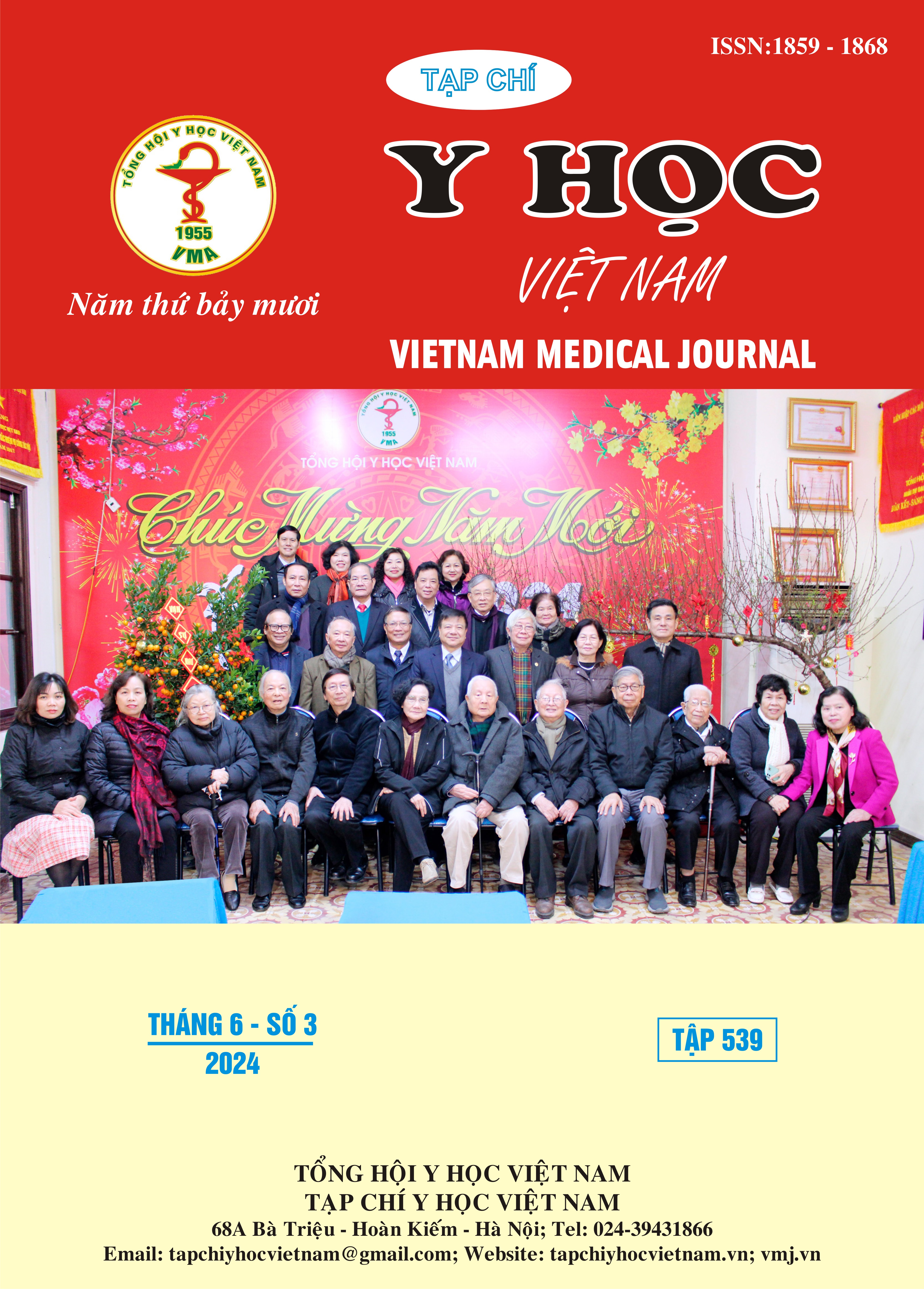ANTIMICROBIAL RESISTANCE CHARACTERISTIC OF BACTERIAL PATHOGENS ISOLATED FROM URINE SPECIMENS AT MILITARY HOSPITAL 103
Main Article Content
Abstract
Objective: Studying the antimicrobial characteristics of bacterial pathogens isolated from urine specimens at Military Hospital 103 from September 2022 to March 2023. Subject and methods: This was a descriptive study. The study subject was bacteria strains isolated from urine of patients at Military Hospital 103 from September 2022 to March 2023. The study variables included bacterial culture results, identification, and antimicrobial susceptibility testing. Results: Escherichia coli was most resistant to ampicillin (86.67%) and trimethoprim/sulfamethoxazole (66.67%) and most sensitive to ertapenem (100%), nitrofurantoin (97.78%), and amikacin (95.56%). Klebsiella spp. was totally resistant to ampicillin, ceftazidime, and cefotaxime and least resistant to amikacin (25.00%). Pseudomonas aeruginosa was highly resistant to most tested antibiotics, ranging from 85.71% to 89.66%. Enterococcus spp. was totally resistant to amikacin, oxacillin, and tobramycin. By contrast, Enterococcus spp. was totally sensitive to linezolid, tigecyline, and teicoplanin and still highly sensitive to vancomycin (96.55%). The rate of multidrug-resistant strains of Klebsiella spp. (95.83%), P. aeruginosa (86.21%), and E. coli (77.78%) was very high. Conclusion: Our study indicates that the proportion of resistance of common bacteria causing urinary tract infection was high, especially K. pneumoniae spp. and P. aeruginosa. The rate of multidrug-resistant strains of Klebsiella spp., P. aeruginosa, and E. coli was extremely high. This study’s result suggested the need for the implementation of infection control measures to limit the spread of antimicrobial-resistant bacteria, especially multidrug-resistant bacteria.
Article Details
Keywords
Antimicrobial resistance, multidrug resistance, bacteria
References
2. D. Rozenkiewicz, et al., Clinical and Economic Impact of Community-Onset Urinary Tract Infections Caused by ESBL-Producing Klebsiella pneumoniae Requiring Hospitalization in Spain: An Observational Cohort Study. Antibiotics (Basel) (2021). 10(5).
3. M. Mahony, et al., Multidrug-resistant organisms in urinary tract infections in children. Pediatr Nephrol (2020). 35(9), 1563-1573.
4. Amy L. Leber, Clinical Microbiology Procedures Handbook. 2016: ASM Press.
5. Clinical Lab Standards Institute, Performance Standards for Antimicrobial Susceptibility Testing (M100). 33 ed. 2023: Clinical Lab Standards Institute.
6. Trần Thị Mộng Lành, Trần Quốc Huy, Lý Ngọc Trâm, Lê Văn Chương, Trần Duy Thảo Tình trạng nhiễm khuẩn tiết niệu và kháng kháng sinh tại Bệnh viện đa khoa tỉnh Kiên Giang năn 2021. Tạp chí Y học Việt Nam (2023). 523, 256-261.
7. Phạm Minh Hưng, Phạm Hiền Anh, Tình hình kháng kháng sinh của các chủng vi khuẩn gây nhiễm khuẩn tiết niệu tại Bệnh viện Đa khoa Quốc tế Thu Cúc giai đoạn 2018-2019. Tạp chí Y dược lâm sàng 108 (2022). 17, 156-163.
8. Lê Thị Ánh Hồng, Lê Mai Thanh, Dương Kim Tuấn, Nguyễn Thị Bắc, Lê Văn Thu, Lê Nguyễn Minh Hoa, Trần Anh Đào, Đặc điểm kháng kháng sinh của các vi khuẩn gây nhiễm khuẩn tiết niệu thường gặp trên bệnh nhân điều trị tại Bệnh viện Đa khoa tỉnh Yên Bái năm 2022. Tạp chí Truyền nhiễm Việt Nam (2023). 3.


